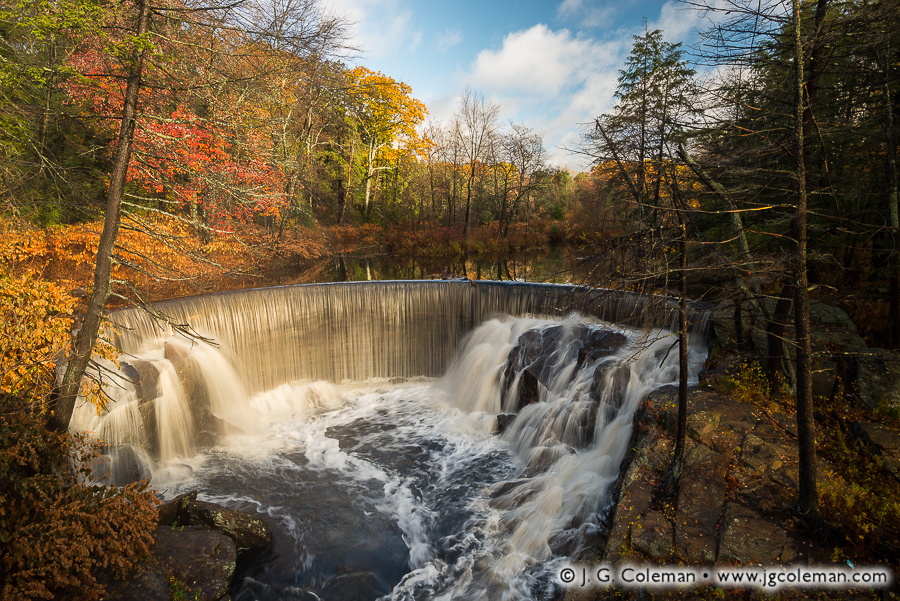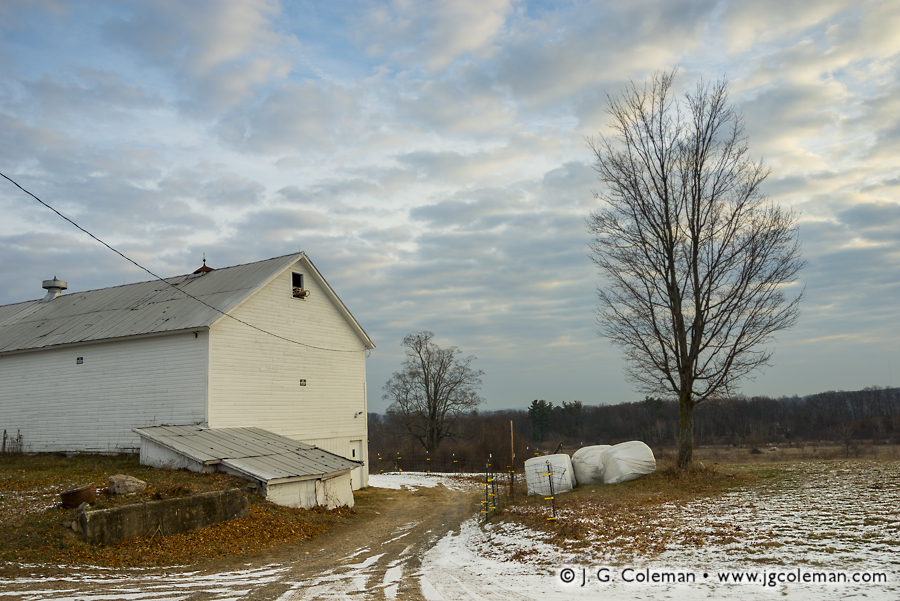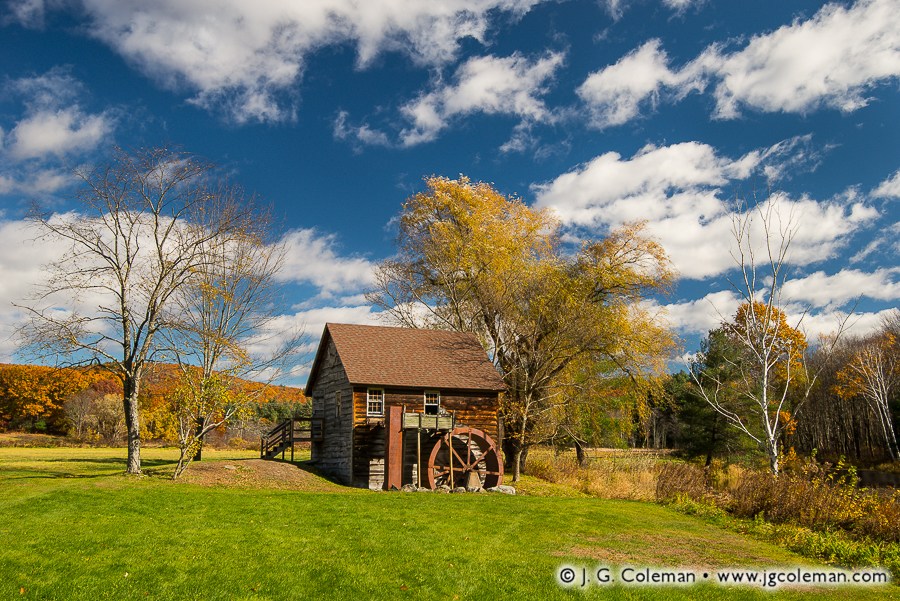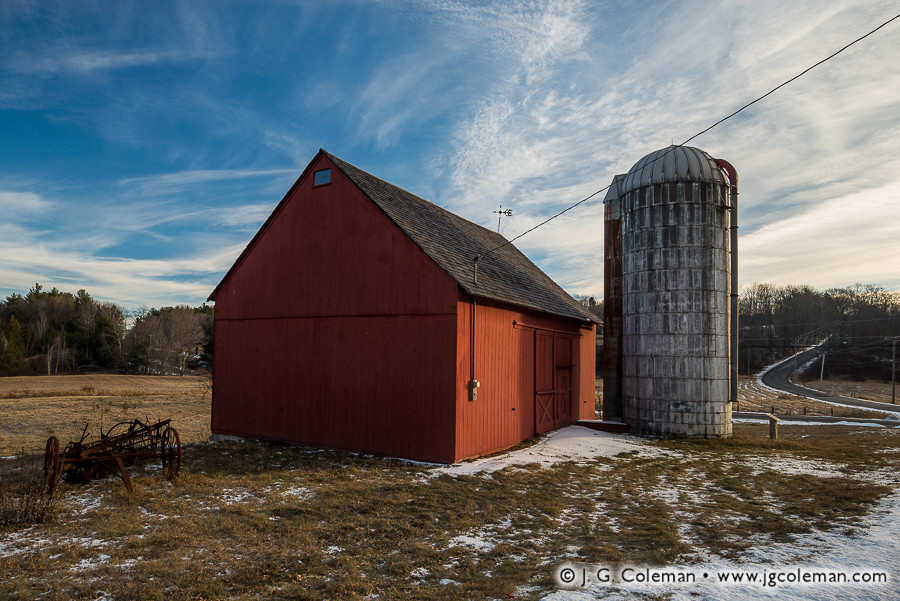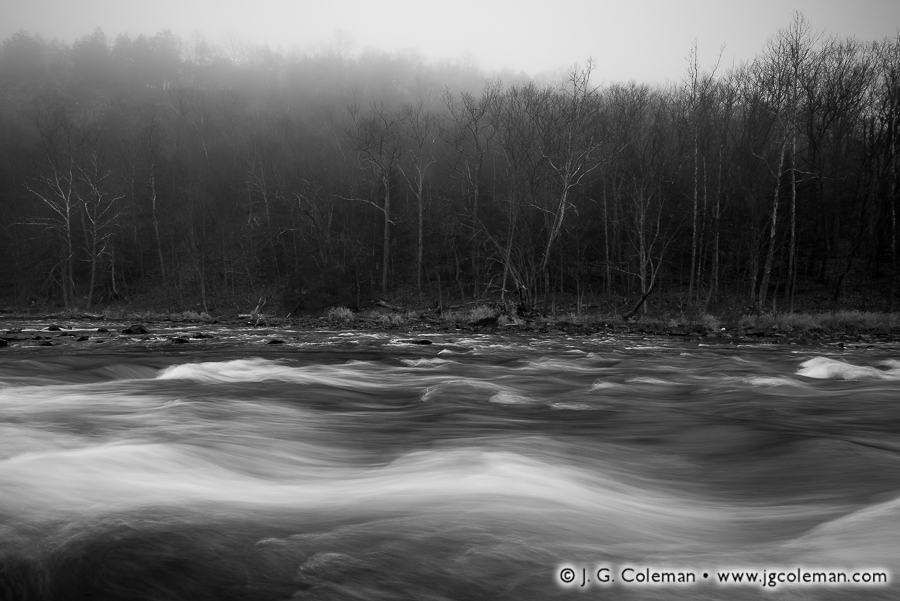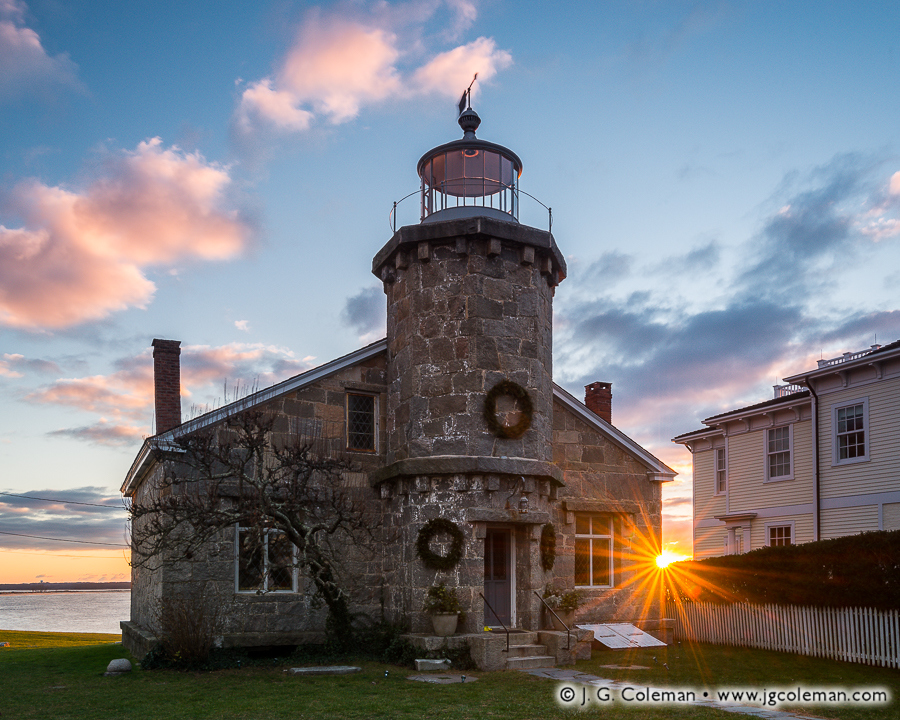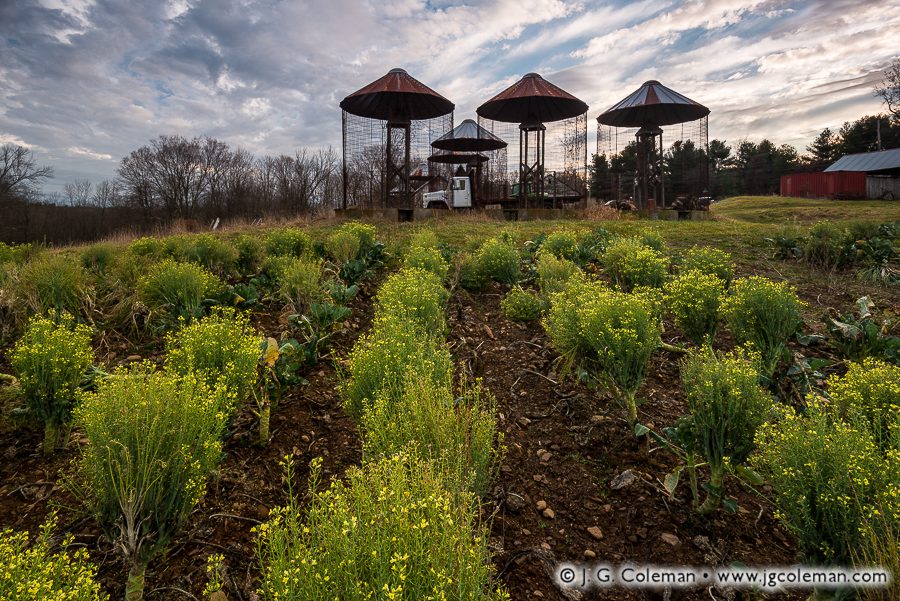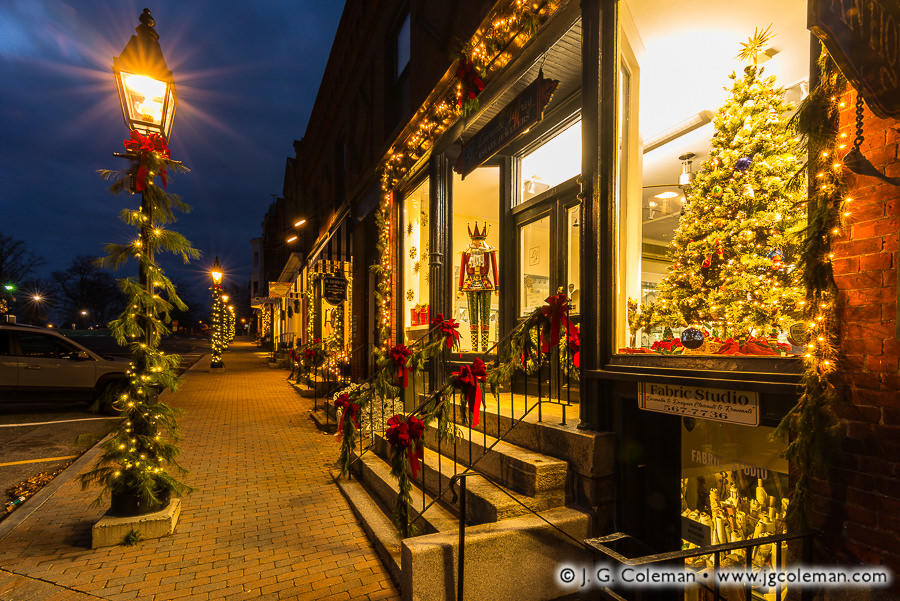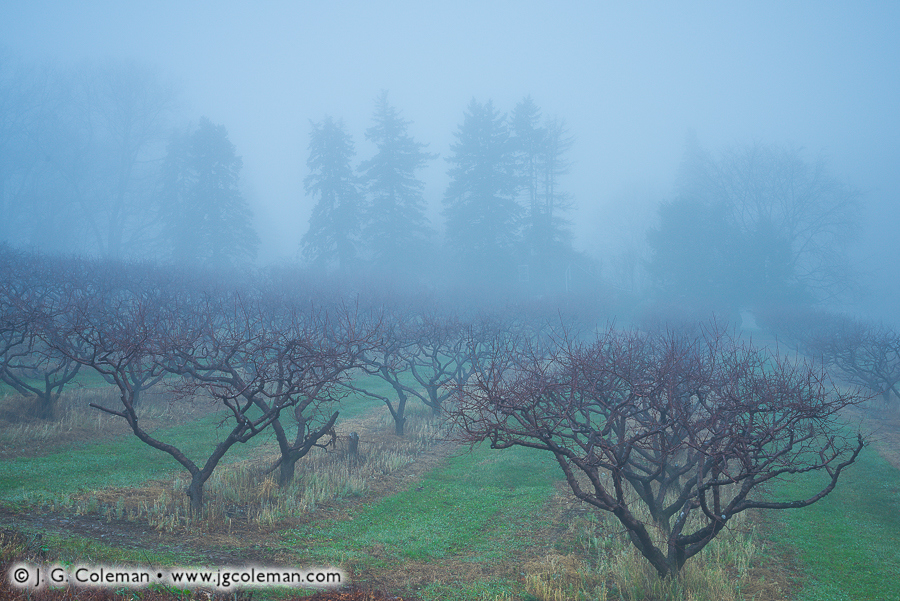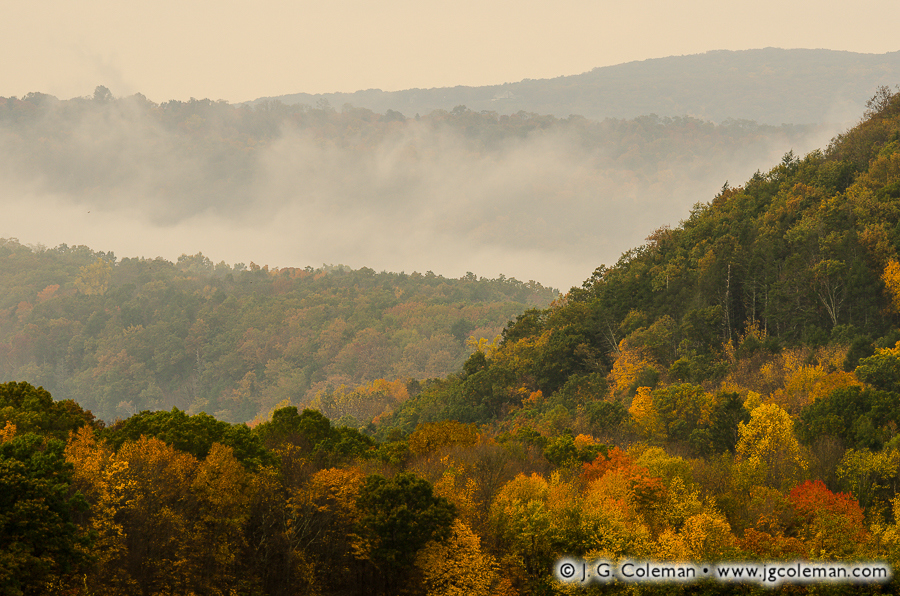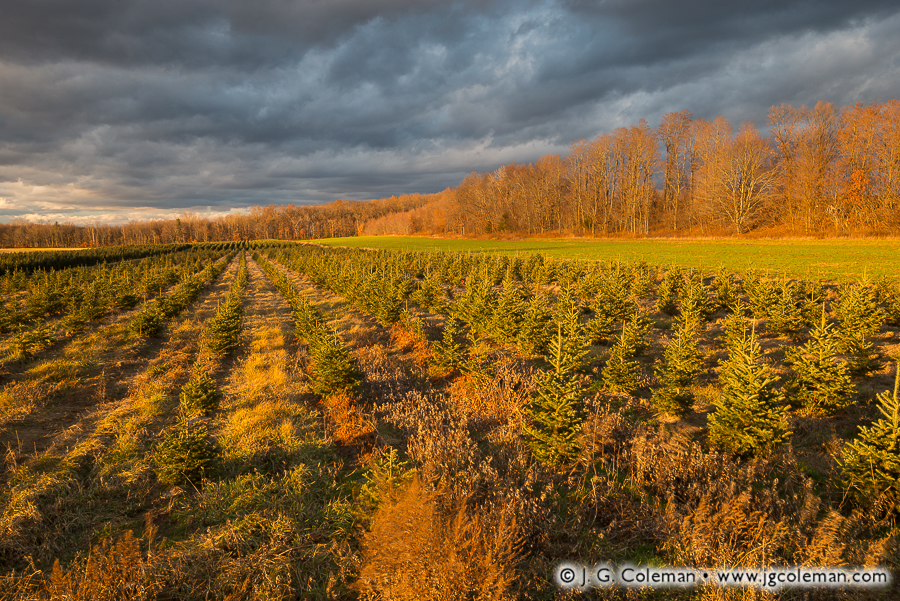In my new piece “Pequabuck Cauldron, Autumn”, serene autumn woodlands crowd the Pequabuck River as it leaps over a relict dam which blushes with the magical glow of dawn. Perpetually in a state of discord, the cool waters are forever parting ways for delicate, orderly veils or furious, crashing whitewater.
Although Pequabuck Falls emerged as a purely natural waterfall after the withdrawal of ancient glaciers from Connecticut, a crescent-shaped dam constructed in 1851 dramatically altered their appearance. What we find here today is a “composite waterfall”, one which incorporates rocky tumbles from the original waterfall with orderly cascades over 160-year-old masonry.

© Archives & Special Collections at the Thomas J. Dodd Research Center,
University of Connecticut Libraries
Marvelously varied industries have harnessed water from Pequabuck Falls since the dam was constructed in the mid-19th century. Initially operating a clock factory, the falls later drove machinery which manufactured buckles for the uniforms of Union soldiers during the Civil War. For decades after the conflict, the site continued to turn out everything from mail bags to lumber to tool handles as enterprises came and went. It wasn’t until 1913 that the trusty waterwheel at Pequabuck Falls was finally retired.
Purchase a Fine Art Print or Inquire About Licensing
Click here to visit my landing page for “Pequabuck Cauldron, Autumn” to buy a beautiful fine art print or inquire about licensing this image.
Want to See More?
Be sure to check out all of my work from Pequabuck Falls.

